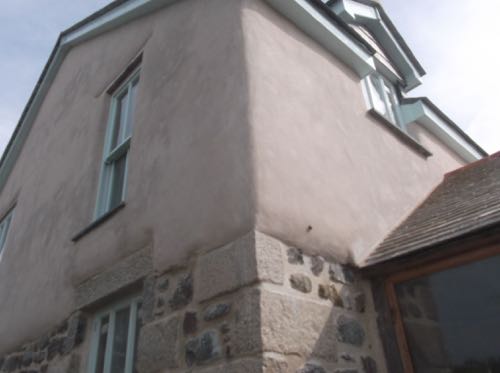The characterful impact of the Cornish countryside, sometimes hard and austere, often soft, mellow and colourful, can be observed and enjoyed right across the natural landscape of the Cornish Peninsula. However, this innate charm and incomparable beauty is not confined to the region’s topography alone, it is reflected in its ancient buildings too. In fact, in many parts of the county it is still possible to ‘read’ the underlying geology of the landscape simply by looking closely at the distinctive character of clusters of traditional homes: the use of granite in central upland areas, the predominance of slate in the North Cornwall coastal villages along the shoreline of the Celtic Sea, the ancient decorative stonework unique to the Lizard Peninsula, and much more.
Restoring Cornwall Properties.
Far from seeking to mimic contemporary approaches elsewhere, traditional building Cornwall fashion always made full use of locally available resources. And now, as the wheel – powered, of course, by contemporary environmental concerns – at last turns full circle, home owners – old and new are learning once again to respect and value their historic properties, and rediscover those well-honed construction techniques once the preserve of every traditional builder in Cornwall. This naturally leads to a demand for the services of local builders such as Oak Ridge Natural Build, based in Helston, whose traditional craftsmanship is blended with a total commitment to sustainable building practices. Frequently called upon to restore heritage properties or construct modern ecological dwellings, Oak Ridge have a palette of traditional building techniques at their disposal, a few of which are outlined below:
Cob Construction
Possibly the most ‘economic’ building material used in Cornwall was cob construction. Consisting of straw and subsoil mixed with water, and maybe even animal dung, cob walls were constructed over a low stone plinth. Building with cob rarely utilised any type of form work – except for doorways and windows – giving properties a truly ‘natural’ look and feel. Alongside much else, renovating cob structures requires a clear understanding of cob-building approaches, plus an appreciation of what the original builders sought to achieve.
Scantle Slating
Scantle slating was a traditional method employed by roofers whereby a wooden rod, or ‘scantle’, was used to calibrate the laying out of slate tiles on wooden pegs. Bedded in wet lime mortar, each course of slates was carefully graded, from the wider slating used at the eaves right through to the narrowest courses fitted at the ridge, producing a neat and very weatherproof slate roof.
Lime Rendering and Plastering
Working with lime is second nature to skilled tradesmen well-versed in its timeless subtleties, but this ancient building material was often displaced by the insensitive application of ‘modern and efficient’ cement-based preparations throughout much of the 20th century – much to the detriment of some fine old Cornish cottages. Lime rendering and plastering invariably increases the potential lifespan of a traditional building – allowing it to ‘breathe’ once again, and to exist in harmony with its surroundings – whilst traditionally applied techniques such as lime pointing and bag rubbing restore the authentic look of original stonework, adding character to an individual property and helping Cornish communities to recover their local distinctiveness.


